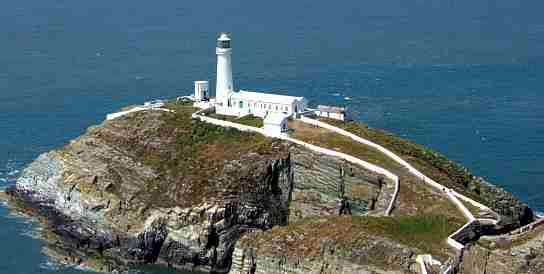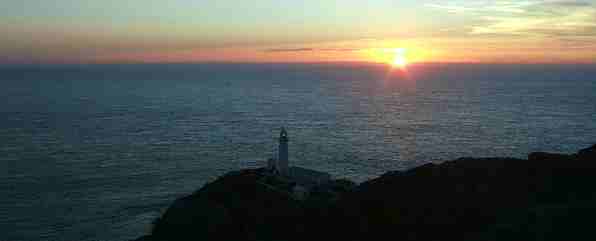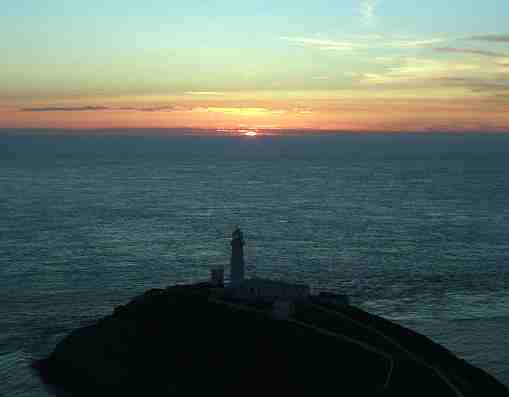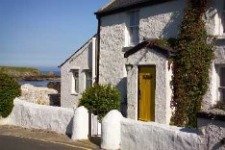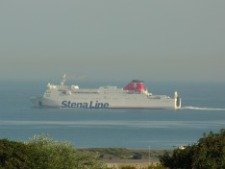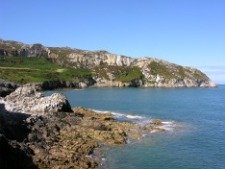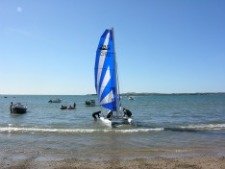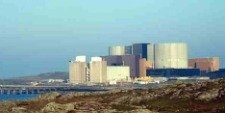|
South Stack Lighthouse, Anglesey
Come and see South Stack Lighthouse off the North West coast of Anglesey. Experience the breathtaking sea views from the steep granite cliffs above the lighthouse. Observe and enjoy the rich diversity of wildlife in this designated Area of Outstanding Natural Beauty.
A number of visitors tell me how impressed they were with the peace and natural beauty of this coastline. And then to visit this important working lighthouse makes the visit worthwhile.
You may be interested in seeing porpoises and
dolphins
or bird watching, enjoying coastal views, rambling or climbing. This is the perfect spot to capture any or all of these things.
Mainly during the summer months people often go down the cliff path in light clothing. Also be aware that there are no toilets on the rock.
HOW TO GET HERE:
Take the A55 all the way to Holyhead. When you enter the town (passing MacDonald's and Netto on your right) go straight across the big roundabout and stay in the left hand lane. Then straight ahead at the lights and take the left turn into town immediately after the Cenotaph monument. You will see a town clock on your right. Go up the one-way system (Thomas Street) and take a left turn at the top. This takes you past Holyhead High School and on to South Stack Road. Keep following the Brown signs and you will find the lighthouse on the headland. Also type LL65 1YH into Google Maps to get an overview. There are about 400 steps down to the steel framed bridge which spans the thirty metres between the mainland and the rocky stack.
If you venture off the steep cliff path it is slippery and dangerous. So parents would be advised to make sure young children do not climb off this main path.
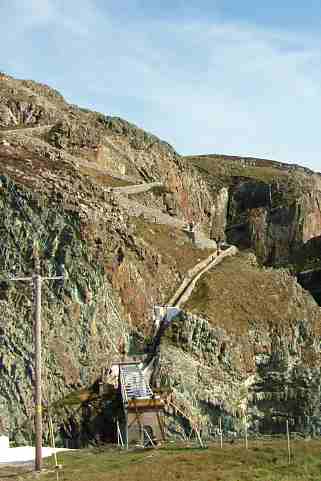
As you wind your way down this steep cliff path, take the time to appreciate the sheer massiveness and changing colours of the granite cliffs.
You will see lichens and mosses growing in the crevices and gaps between the path wall and the rockface.
Just over half way down is a big hole in the rock with a "seat" for the observer to get a good view of the drop below.
It's almost as if nature anticipated the visitors and prepared a comfortable viewing platform. If a young child wants to experience this, parents need to take extra care. Through this gap you may see some intrepid climbers tackle the rock face. It's more comfortable watching them from a safe spot. But if you like a climbing challenge, you'll enjoy these cliffs.
You can often see numerous species of birds nestling in the cracks in these cliffs as you make your descent. Choose the right time of the year- end April to early June- and you will likely see puffins on the rock. Later on in July and August the guillimots and shearwaters are out in force.
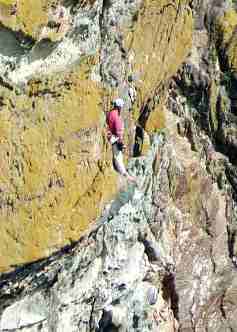
Here affords a magnificent panorama. You can see eastwards beyond Carmel Head and Skerries and as far south as Bardsey island. To the west of course is Ireland and the mountain ranges popping up on the distant horizon south of Dublin Bay.
As you cross the steel framed bridge you can see the waves crashing against the rocks below. And when the wind is stronger, the effect is quite spectacular as the sea is wipped up and the wind whistles through the bridge frame. If you keep an eye out to sea, you may well see one of the ferries on route between Holyhead and Dublin. There is quite significant coastal traffic passing South Stack, with many freight ships also sailing to and from Liverpool. It is only when you have sailed a yacht or been a mariner or passenger on a ferry that you appreciate the benefit of a landmark such as South Stack. I recall returning from Ireland by yacht on a night passage, and keeping watch for the first sight of the light beam on the eastern horizon.
On some clear days it is possible to see the Wicklow and Mourne Mountains of Ireland on the western horizon. And if you look in a northerly direction you might be able to make out the mountains on the Isle of Man.
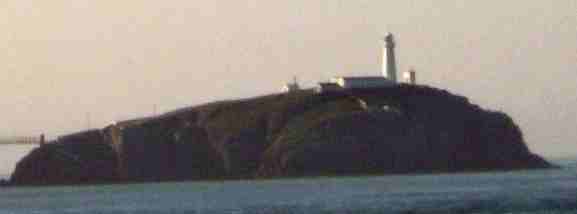
The history of South Stack starts in 1665. Not long after the death of Oliver Cromwell and the restoration of the monarchy, Charles II, King of England, refused permission to grant a patent for a lighthouse to be built on the rock. The years passed but eventually in 1809, the
Trinity House Corporation
established the first light on the stack.
|





